Ask Ethan #67: Dark Matter vs. Dark Energy
The Universe looks bizarre: a plethora of galaxies, many clusters, but very little bigger than that. What made it so?
“We are incredibly heedless in the formation of our beliefs, but find ourselves filled with an illicit passion for them when anyone proposed to rob us of their companionship.” –James Harvey Robinson
Sure, most of us have some version in our heads of how this — the Universe — all came to be the way it is. Yet some of the details, no matter how scientifically well-versed we are, have got to seem puzzling. This week’s Ask Ethan comes courtesy of the inquiry of Tom Anderson, who becomes the fourth winner in our Year In Space 2015 calendar giveaway, with his submission:
[D]ark matter attracts while dark energy repels. Dark energy is continuously driving the expansion of space in between gravitationally bound galaxies/clusters and it seems that the current general consensus is that universe is set to ever expand, cooling and eventually into a “big freeze” scenario. Taking from this, as gravitationally bound systems do not expand, that the combined attraction force of dark matter and ordinary matter is equal or greater to the repelling force of dark energy and ordinary energy. Why then, did the universe expand at all after the Big Bang? [W]hy didn’t the dark matter counteract the force of the dark energy in the universe’s infancy?
This is a mouthful, so let’s start by breaking this down.
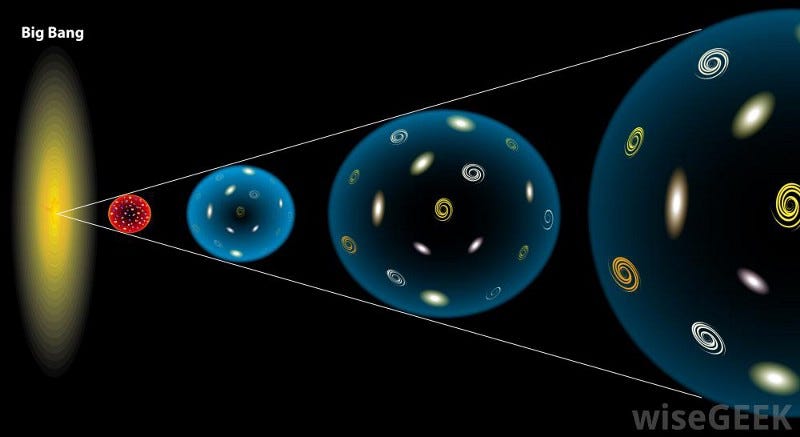
The way the Universe works, and how structures like stars, galaxies, and clusters of galaxies form is a little bit out of the realm of our ordinary experience. To simplify it greatly, our Universe is made of expanding spacetime, where the rate of expansion starts off at some initial value, determined by the physics of cosmic inflation and how that inflationary period ends.
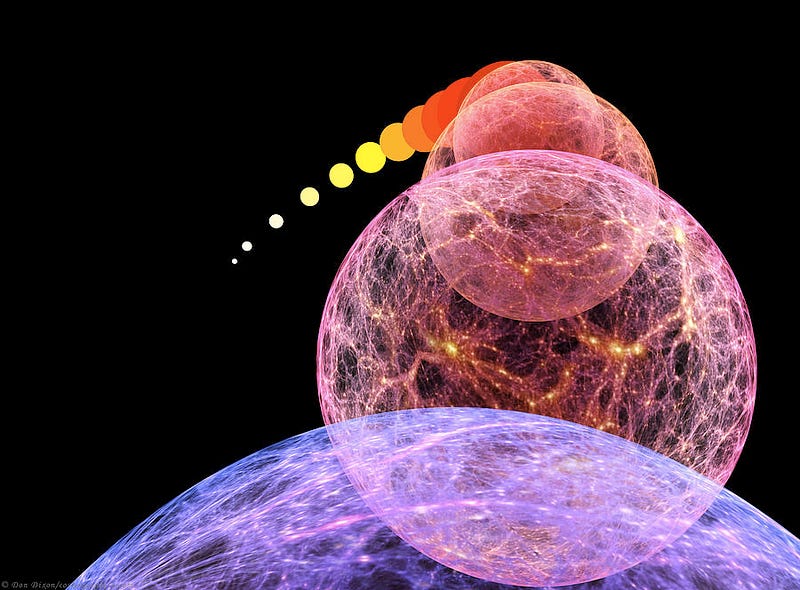
But that expansion rate isn’t constant once inflation does end, because the Universe is filled with all sorts of other forms of energy: radiation, matter, antimatter, neutrinos, dark matter, and a little bit of energy inherent to space itself, known as dark energy. It’s the combination of all these things — which change as the Universe expands — that determine how the expansion rate of the Universe changes as time goes on.
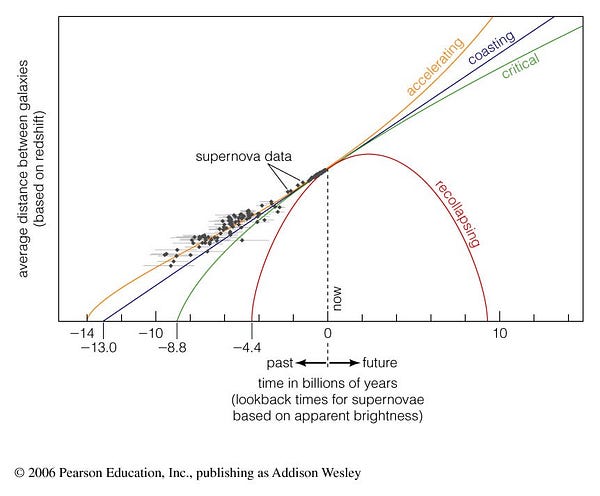
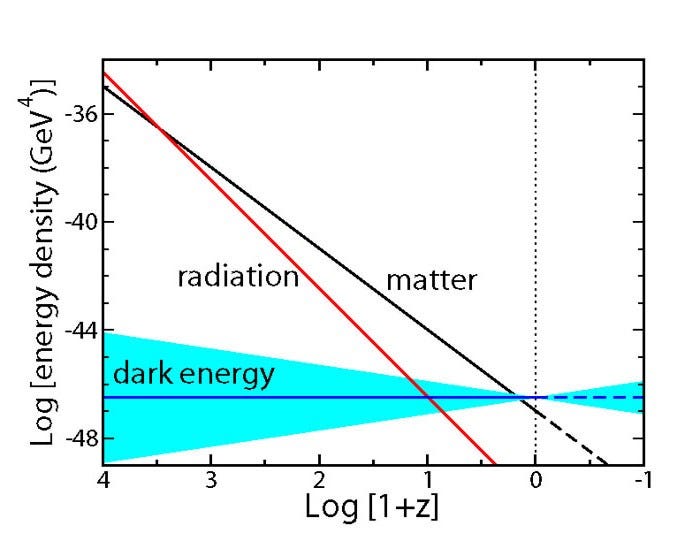
So, on a global scale, meaning on the scale of the entire Universe, it’s either going to recollapse entirely, expand forever, or be right on the border between those two cases, depending on what the varying ratios of all the different forms of energy are in the Universe.
For the one we actually live in, it looks like the Universe will expand forever and ever, as dark energy has come to dominate our Universe at late times.
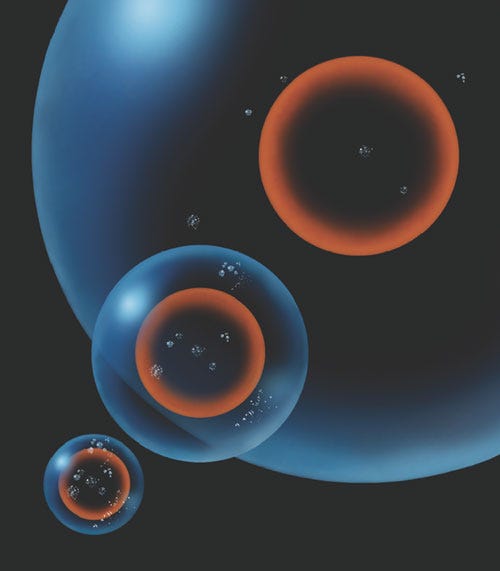
doi:10.1038/scientificamerican0206–66sp.
But this analysis doesn’t apply to the Universe on all scales; it simply tells us what is happening to the Universe on a global scale, or the scale of the entire Universe! It tells us that now, at late times and on large scales, objects that are not yet gravitationally bound together will begin accelerating away from one another.
But there are still gravitationally bound systems, and they exist on small scales in great abundance, on medium scales in moderate abundance, and on relatively large scales in sparse but non-zero abundance. And it’s all part of the same cosmic story.
You see, the Universe didn’t start off perfectly smooth, with exactly equal amounts of matter, radiation, dark matter and dark energy in all locations. If it had, our Universe would be incredibly boring; it would be a perfectly uniform sea where everyplace was exactly average. There would be no stars, galaxies or planets, no voids or places that were empty, no people, animals, life, clusters or filaments.
Instead, from a very early time, we find that the Universe has slight regions of overdense and underdense regions on all scales: on small, medium and large scales.

Dark matter helps the overdense regions grow over time, and they can grow quickly enough that they will gravitationally collapse, in as little as a few tens of millions of years. It’s as though small regions of the Universe started out, locally, with an overall matter-and-energy density that was great enough so that, if the entire Universe were that way, it would have recollapsed altogether rather quickly!
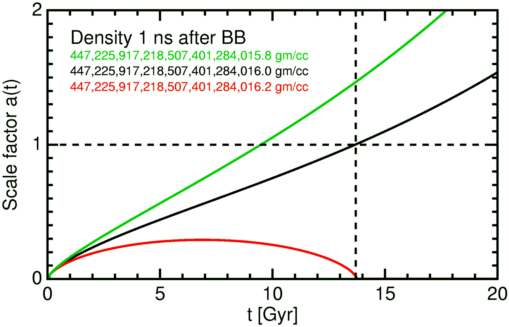
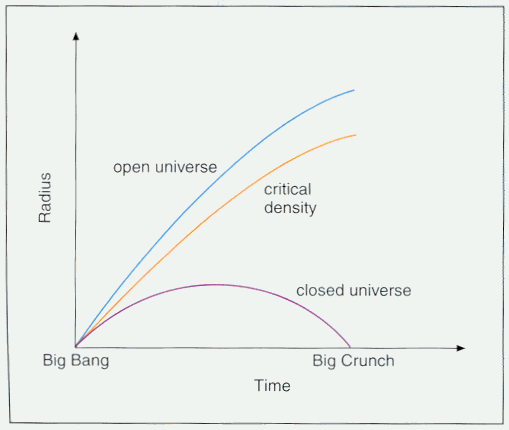
Of course, there are many more regions where the density is less than average, and they tend to give up their matter to the denser regions; if the entire Universe were like those regions, we would have very, very few stars, galaxies and clusters.
But it’s this very diversity in initial conditions all over the Universe that enables us to wind up with this huge diversity of all that we can see. In the cosmic struggle of dark matter vs. dark energy, of gravitation vs. the expansion, of the great cosmic “pulls” to form structure and the cosmic “pushes” to suppress it, there are both winners and losers.
We notice the winners far more easily, because they copiously emit and absorb visible light and light from other portions of the electromagnetic spectrum, they gravitationally lens material behind them, and because it’s a lot easier to detect the presence rather than the absence of something.

But the empty regions are there, and they matter, and — in fact — they vastly outnumber the “full” regions! The combined attractive force of dark and normal matter can defeat both the initial expansion and the additional, accelerative force of dark energy, but only on relatively small scales and at relatively early times.
As we go to larger and larger scales, we find that there are more and more victories for repulsion, and as we reach the largest scales, repulsion always wins.
The Universe expanded in the beginning because of the initial conditions set up by inflation, and the recollapse option — thanks to the gravitational pull of quantities like normal matter, dark matter, radiation and neutrinos — was only enough to “win” in a few select locations. It didn’t win in all of them, it didn’t win in most of them, and it didn’t win on average.
And that’s why, when we look out at our Universe today, there are tons of galaxies littered throughout it, many of them clustered together in groups and large collections, and on large scales, aligned along filaments. But these galaxy groups that consist of a few thousand galaxies spanning a few hundred million light-years in size are most likely the largest bound structures we have; on all scales larger than that, alignments are temporary, as the presence of dark energy will eventually drive them apart.
If the Universe had just the tiniest amount more of dark matter — something like 1 part in 10^24 more — it would have recollapsed billions of years ago. It was very finely balanced for a long time — with gravity winning locally in some spots and losing in others — but now that dark energy has come to dominate it, we’re seeing that its effects are going to win out. It wins in the end, it wins on the largest scales, and it wins for everything that wasn’t already gravitationally bound together after the first seven-or-so billion years of the Universe.
And that, Tom Anderson, is the answer to your question about the growth, expansion and fate of the Universe! We only have one week left (and one more calendar left) for our Year In Space 2015 calendar giveaway, and if you want a chance to win it, send in (along with your email address) your questions or suggestions for an Ask Ethan column. You could be the year’s final lucky winner!
Leave your comments at the Starts With A Bang forum on Scienceblogs!





